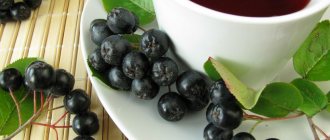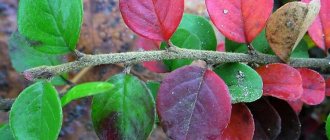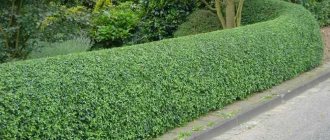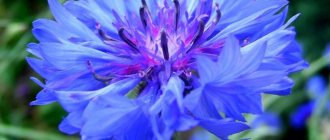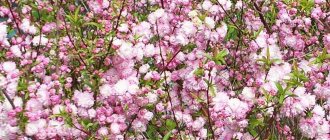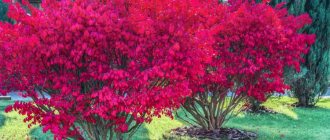In our changing world, people are often exposed to stressful situations.
It’s a great idea to get acquainted with and grow popular species and varieties of cotoneaster at your dacha. This unusual plant requires special care at an early stage of development, but later it transforms the garden into a colorful place of peace. Some gardeners believe that dogwood and cotoneaster are the same plant. In fact, they belong to different families. Cotoneaster is a low deciduous shrub for ornamental purposes. Whereas dogwood is a plant that bears tasty fruits. Various types and varieties of cotoneaster are used to decorate garden areas, city parks and suburban areas. It is used to form original hedges and is also used for alpine slides. The appearance of cotoneaster is especially impressive in the fall, when its foliage turns red, shimmering in the rays of sunlight.
The shrub is valued for its glossy fruits of scarlet or black coloring, which hang on the branches for a long time, attracting everyone's attention.
Description and characteristics of types and varieties of cotoneaster
Cotoneaster and dogwood are completely different plants, which a novice gardener should immediately understand. While dogwood is most often grown for its berries (although the plants themselves are very beautiful), cotoneaster has inedible berries; it is an ornamental plant.
What is cotoneaster
Wild cotoneaster, a member of the Rosaceae family, is primarily found in relatively warm regions, both in Eurasia and the Americas. But many species are so frost-resistant that they can be planted in northern Siberia. In addition, they are distinguished by their extraordinary drought resistance, which is another advantage when using cotoneaster in ornamental plant growing.
Cotoneaster reacts normally to gas pollution and dust in cities, does not require highly fertile soil, and easily tolerates shading. It practically does not get sick, but is sometimes attacked by pests. Easily propagated by all methods known for shrubs.
The shrub can serve as a rootstock for a pear, although in practice this ability is rarely used.
Most species of cotoneaster grow in the form of low bushes, almost all shed their leaves for the winter, but there are also evergreen varieties. Very durable: grows for over 50 years. The bushes can be erect or creeping, they are densely covered with small leaves, usually ovoid, dark green in color, sometimes with stripes or patterns. In autumn, the foliage gradually turns red, so cotoneaster is beautiful at this time of year.
In autumn, red leaves begin to appear on the bushes, and subsequently they all turn purple
The inflorescences, racemose or corymbose, contain many small flowers, in most cases white or pink. The fruits are apple-shaped, small, at first green in color, and during ripening they become orange, red or almost black: the color of the fruit depends on the type and variety of cotoneaster. The fruits are not poisonous, but are not used as food by people, and birds feed on them. Contains several seeds. The roots of cotoneaster are located close to the surface, they are highly developed, the branching of the roots is used to strengthen slopes and uneven terrain.
Types of cotoneaster
There are many types of cotoneaster, but within each species the number of varieties is small. For example, in the State Register of the Russian Federation there is no section dedicated to this culture at all. Three types are characterized by the greatest frost resistance and pickiness, allowing their use in most regions of our country: shiny, chokeberry and whole-edged cotoneaster. Horizontal cotoneaster, loosestrife and Dummer's cotoneaster are also of great interest.
Cotoneaster brilliant
The brilliant cotoneaster grows in the wild in eastern Siberia and is one of the most common species in the cities of our country. Can grow up to two meters in height. In the wild it can grow both in the form of thickets and solitary bushes. Leaves up to 5 cm in size fall off in the winter. The flowers are pink in color. Blooms in May-June. Ripe fruits are black.
Cotoneaster brilliant is best known in our country
The brilliant cotoneaster is planted not only to decorate garden and park areas. It is often placed on the sides of roads: it does not react at all to gas pollution and is extremely unpretentious to weather conditions. In autumn the leaves turn purple. The fruits are edible, but tasteless, so they are not used in cooking.
Cotoneaster aronia
Chokeberry cotoneaster also grows to about two meters in height and tolerates adverse weather conditions. The underside of the ovoid leaf is covered with pubescence, as are the young shoots. The flowers are pink, collected in inflorescences of up to 15 pieces. The fruits, up to 1 cm in size, are very similar in appearance to the fruits of chokeberry and ripen in early September. They are edible, but are not of interest as fruits or berries, but are widely used in folk medicine. However, all parts of the plant have medicinal uses.
Aronia cotoneaster fruits can easily be mistaken for chokeberry fruits
Common cotoneaster (whole edge)
Common cotoneaster grows up to two meters. Annual shoots are pubescent, but subsequently become smooth. The leaves are oval to almost round, matte, reaching 5 cm. From below they appear whitish, as they are abundantly pubescent. There are only a few flowers in the inflorescences; the shrub blooms in early spring. The fruits are round and bright red in color. In the wild, this cotoneaster grows in Western Europe, as well as in the Caucasus, but has been used for landscaping urban areas for several centuries.
Common cotoneaster began to be used earlier than others for landscaping areas
Cotoneaster horizontal
Cotoneaster horizontalis is an inhabitant of the mountains of China. The bushes are very low, up to half a meter. The leaves are dark green, with a strong shine, high foliage. By autumn the leaves turn red and fall off by winter. The shrub blooms with pink-red flowers, the fruits are red, up to 5 mm in size, and stay on the branches for several months. Varieties of this cotoneaster have been developed: Variegatus, Perpusillus and Saxatilis, differing in the size of the bush and leaves.
Cotoneaster horizontalis - the most famous representative of low-growing species
Dummer cotoneaster
Dummer's cotoneaster is a tiny plant, up to 30 cm high, but one bush can spread its creeping shoots up to a meter in different directions. The dark green leaves are very dense, small, the flowers are honey-bearing, but uninteresting in appearance. The shrub takes on special beauty during the ripening of its fruits. They are coral-red in color and hang on the branches all winter. This cotoneaster also has varieties: Coral Beauty, Eichholz, Cardinal and Stogholm, which differ in the size of the bush and, slightly, in the color of the flowers.
Dummer's cotoneaster bears fruits of very beautiful color
Cotoneaster
Cotoneaster, like Dammer, is also distinguished by creeping shoots that are close to the ground. As a result, the bush, which is no more than half a meter in height, spreads two meters in width. Unlike most species, loosestrife does not shed its leaves for the winter. The flowers are white in racemes, the fruits are red, and hang on the bushes all winter.
Cotoneaster is a representative of evergreen cotoneasters
Other types
Other species of this plant are much less widespread in our country:
- racemosa (grows in the form of a tree up to 3 meters high, blooms with pale pink flowers, the fruits are bright red);
- multi-flowered (the shrub grows up to 3 meters, blooms and fruits profusely, but is much less frost-resistant than other species);
- small-leaved (evergreen miniature shrub with white flowers and orange-red fruits);
- felt (bush up to 1.5 meters high, branches with strong pubescence, pink flowers);
- splayed (spreading bush up to one and a half meters high, with bright red fruits, very hardy).
In total, more than fifty species and varieties are known, and all of them are cultivated to one degree or another and are widely used in landscape design, for the purpose of landscaping and beautifying cities.
Interesting Facts
- Cotoneaster can adapt to various conditions, making it a highly adaptive plant.
- On average, a plant lives 50-60 years.
- The distribution area of cotoneaster is unusually large - it grows even in Africa.
- To prepare a simple decoction, just pour boiling water over the leaves. The decoction is consumed gradually, taking a few sips 2-3 times a day, which helps heal ulcers and gastritis.
- Gardeners prefer to use several varieties when planting. The resulting combinations surprise with their variety and splendor.
Cotoneaster, no matter how beautiful it is, is rarely used in cooking. Its bright and eye-catching fruits are almost inedible, but are used in folk recipes. At the same time, this amazing plant has found wide application in landscape design and is popular not only in Russia, but also in many other countries, and due to its resistance to weather factors and pests, ease of planting and care, cotoneaster can be called the dream of any gardener who wants to make his garden beautiful.
Planting cotoneaster, including for creating a hedge
In the vast majority of cases, cotoneaster is used as an ornamental crop. Species that form creeping crowns of small height are planted as cover plants on lawns and alpine hills. Species growing in the form of shrubs with a height of a meter or more are used as hedges, separating park alleys and garden areas from roadways, and the tallest bushes are also used to create shady areas.
Planting scheme
The planting technique for all types looks the same, only the planting patterns differ. Thus, the smallest shrubs are planted at a distance of about 50 cm from each other, tall ones - less often. Depending on their purpose, they can be planted at distances of 1.0–2.5 meters: thicker for a hedge, less frequent to give each bush a fancy shape. It is also possible to plant individual bushes far from each other: after all, each specimen can serve as a decoration in itself.
Landing dates
Cotoneaster of all types is planted mainly in the spring, although there are exceptions: Brilliant and Chokeberry are equally well accepted for both spring and autumn planting. Spring planting is carried out after the soil has thawed, but before the seedlings begin to open buds. Autumn - after the leaves have fallen, but long before the onset of serious frosts. Autumn planting is more suitable for gardeners in warm regions; in the center of Russia and to the north it is better to plant in the spring.
However, strict deadlines are set only for seedlings with bare roots. Seedlings with a closed root system (in containers), which have become popular in recent years, are suitable for planting at any time, with the exception of very hot sunny days. Seedlings can be between 2 and 4 years old.
With a closed root system, fairly mature seedlings take root well
Choice of location and predecessor
Cotoneaster grows almost anywhere, and since there is no question of harvesting, the planting site is chosen based on the need to decorate a particular area. You should not pay attention to the lighting, although in the sun the shrub will look somewhat more decorative. There is no need to select the soil composition; the only requirement is that it not be swampy; in any case, drainage material is placed at the bottom of the planting holes.
Cotoneaster practically does not care what crops grew before it, but, according to the rules of crop rotation, it is necessary to avoid planting it directly after related, that is, pink-flowered crops. Of course, a huge number of fruit and berry trees and shrubs are grown in our gardens. This includes apple, pear, cherry, raspberry and strawberry. And among the ornamental shrubs are rose, rose hip, hawthorn, etc. Therefore, if you have a choice, you should not plant cotoneaster after them, but, of course, there is no strict ban on planting.
Preparing the soil and planting hole
Cotoneaster has little demand for soil fertility, but since it is planted for many decades, when digging up a site to remove weed rhizomes, they try to fertilize it a little, and in the case of planting multifloral cotoneaster, they also lime it by adding slaked lime in a dose of 200–300 g/ m2. When digging, a bucket of compost per 1 m2 will be enough. In the case of clay soils, add sand in approximately the same dosage.
If the bushes are planted at a considerable distance from each other, they dig planting holes, but if they are going to grow a hedge, it is more convenient to dig a common trench. The hole should have dimensions of about 50 x 50 x 50 cm, the trench is dug of a similar width and depth. It is important to lay down a 10–15 cm layer of crushed stone, pebbles or gravel, above which fertile soil is poured. The optimal composition is turf soil, river sand and peat (or compost) in a ratio of 2:2:1. 100–150 g of lime in the pit will not interfere with any type of cotoneaster.
Recent Entries
Lilac perennials that are beautiful, compact and do not crowd out other plants Why when buying seedlings you should not take the sellers’ word for it and how to determine the age of the plant using 3 signs Tomato seedlings have turned purple or whitish: why the color has changed and how to save the plants
A drainage layer at the bottom of the pit for cotoneaster is required
Planting and transplanting processes
Planting cotoneaster in a pre-prepared hole is not difficult. Having removed the required amount of soil mixture from the hole, the seedling is installed so that the root collar is 2–3 cm above ground level (with subsequent compaction of the soil, it should drop exactly to the ground). This is an important point: significant deepening of the root collar can lead to the death of the plant. Otherwise, everything is as usual: the seedling is well watered, the soil is mulched with peat chips or any other material.
The good thing about cotoneaster is that it can be replanted at any age, as long as it is physically possible (the bush is not too large, the root system can be removed without severe damage). Transplantation is carried out in spring or autumn, but young bushes, if they can be removed with a lump of earth, can be replanted even in summer. When digging up a bush, it is important to preserve the roots as much as possible, and in a new place plant it at the same depth and water it well. It is possible that in the first couple of years the transplanted bush will bloom significantly less.
Video: planting cotoneaster along the fence
Briefly about the main thing
A hedge of brilliant cotoneaster is a universal option that will add new shades to your garden design. The shrub combines decorativeness and unpretentiousness. It tolerates not the best soils, is able to grow in the shade and can withstand moderate frosts.
Traditional care includes watering, loosening, and fertilizing. Formative pruning is carried out in the spring, giving the cotoneaster its intended shape, which it perfectly retains. It is easy to “fit” a shrub into the surrounding landscape by choosing the appropriate placement option in the garden.
Ratings 0
Cotoneaster care
Caring for cotoneaster is extremely simple. And if in the first year or two after planting it needs to be periodically watered and weeded out, then after the seedling takes root well and begins to grow, you can not pay attention to it at all.
Watering, fertilizing
An established cotoneaster bush requires watering only in case of prolonged drought. However, even without this, it most likely will not die, but it will grow poorly and bloom sparingly. Therefore, if you want to squeeze out all the possible splendor from the bush, it is periodically watered and fed. After watering, it is necessary to loosen the soil if it is not contained under a layer of mulch.
If it is possible to water with a hose, you can do it not at the root, but along the crown: a lot of dust and debris always gets stuck in dense thickets; at the same time, this method is also used to sanitize the bushes.
When watering, it is important to observe moderation: it is better to keep this plant on a semi-dry ration rather than in waterlogged soil. In case of drought, an adult bush may require up to 80 liters of water, but next time watering will not be required soon.
When it comes to fertilizing, the usual rule applies: in spring the plant needs nitrogen most, in summer potassium and phosphorus, in autumn potassium. Autumn fertilizing is usually done with ash (up to half a liter per square meter), early spring fertilizing with urea (a couple of handfuls for an adult bush), and at the beginning of flowering superphosphate and potassium sulfate (30–40 g/m2 each) are added. Mulching the soil before winter with a 3-4 cm layer of humus completes the nutrition cycle for the season. After mulching, some heat-loving species of cotoneaster in cold regions are lightly covered for the winter by bending the branches and throwing coniferous spruce branches over them.
Trimming and shaping
Cotoneaster tolerates pruning easily, does not get sick from it, and often even feels better. Forming a bush and giving it the desired shape is best done in the spring, before the buds open. You should not shorten the remaining shoots by more than a third at a time. Pruning stimulates cotoneaster to grow shoots and branch. By pruning bushes, they make prism-shaped, cone-shaped bushes, shape them into a ball, a cube, and even various living figures. True, it is better for an inexperienced gardener not to get carried away with these actions without quality training.
Designers make any shapes from cotoneaster bushes
Sanitary pruning is carried out at any time and does not require special knowledge: everything that is broken, dried out, damaged by pests and frozen must be cut out. Over the years, the oldest shoots are cut out, rejuvenating the bushes, as well as those that thicken the crown too much.
Protection from diseases and pests
It is extremely rare for cotoneaster to get sick. Only in conditions of excessive humidity and unfavorable weather do fungal diseases sometimes occur, most often fusarium. The affected fragments must be cut out, and the bush should be sprayed with Bordeaux mixture (in spring and autumn, a 3% liquid is used; during the growing season, on green leaves, 1% is used). If the disease has gone far, you can try to transplant the young bushes to a new place, heavily pruning them, and the soil after them can be well disinfected with potassium permanganate or copper sulfate. The presence of a drainage layer in the planting hole and periodic loosening of the soil are good prevention of fungal diseases.
With fusarium, entire shoots become spotted and wither.
Pests are found on cotoneaster somewhat more often. These could be apple aphids, scale insects, and various mites. In the initial stage, when the number of pests is small, they try to cope with folk remedies. Decoctions of yarrow, tobacco dust, marigolds, or an infusion of ash and soap can help. After a few days the treatment will need to be repeated.
If such measures do not help, and the number of pests increases, they resort to insecticides. Since cotoneaster is not used for food, chemicals can be used at any time. It is only important to take precautions: as a rule, approved insecticides belong to the 2nd or 3rd hazard classes, and spraying should be carried out in protective clothing and a respirator. Any drugs can help against insects on cotoneaster, but to be sure, immediately use Aktara or Actellik.
Pests
Cotoneaster is famous for the fact that it is practically not afraid of pests and diseases. Sometimes you can see apple aphids on the shoots, which have a detrimental effect on the development of the bush, causing significant damage to it. As a result, the branches and leaves dry out, so pests must be dealt with in a timely manner. These also include plum sawfly, scale insects and cotoneaster mites.
Reproduction methods
Cotoneaster is propagated both by seeds and vegetatively. Vegetative propagation is simpler and used more often, and sometimes adult bushes can even be simply dug up and divided into parts.
Propagation by cuttings
Propagation of cotoneaster by cuttings is carried out similarly to propagation of, for example, currants or chokeberries. Both lignified cuttings and green ones are used. With lignified ones the process is much simpler. After the first frost, it is enough to take cuttings from annual side shoots and plant them in loose, moist soil in the spring. The cuttings must be at least 15 cm long and have three buds. In winter, the cuttings are stored in a cellar in slightly damp sand. They are planted obliquely, so that the middle bud is at ground level. During the summer, the cuttings are watered, the soil is loosened, and a year later the young bushes are planted in a permanent place.
Green cuttings are cut closer to mid-summer, in early July. They must be treated in solutions of growth stimulants, after which they are planted in a mixture of peat and sand: either in a box or in a bed. Until the end of the season, cuttings should be kept in moist soil and humid air. Therefore, they are covered with, for example, half a plastic bottle, and make sure that it is moist underneath, but that the cuttings do not ripen (for the first time, you can simply put plastic bags on them). If everything goes well, the small seedlings will also be ready by spring.
You can also use combined cuttings.
Video: propagation of cotoneaster by combined cuttings
Reproduction by layering
Propagation by layering is a very simple technique, especially in the case of low-growing cotoneaster species. In the spring, they mark a young strong shoot growing on the periphery of the bush and try to bend it to the ground. If it works, they dig up the soil at this place, fertilize it with humus, make a depression of 8–10 cm, where they place the shoot and pin it with wire or any other convenient object. Fill the hole with fertile soil, water and mulch. During the summer, keep this place moist. By autumn, from each bud on this shoot a new plant with roots will already grow, but it is better to separate them and replant them with a lump of earth next spring.
Propagation by seeds, including at home
Propagation by seeds is the most labor-intensive. Ripe fruits are dried and the seeds are removed from them, after which they are washed well in water and sorted. The easiest way is to let them float in a jar of water and use only the ones that have sunk. The seeds are mixed with a peat-sand substrate and removed until spring for stratification in a cellar or other room with a temperature of about 0 °C.
In spring, the seeds are sown in loose, moist soil to a depth of about 2 cm. The bed is covered with film so that it does not dry out, but is periodically raised for ventilation. Seed germination is very uneven: the first shoots may appear in two weeks, but the next ones will have to wait the same amount, or even more. In any case, a germination rate of 20% is already an achievement. Throughout the summer, the seedlings are carefully looked after; by autumn they can grow to a height of 15–20 cm. Next spring, the seedlings can be carefully transplanted to a permanent place.
